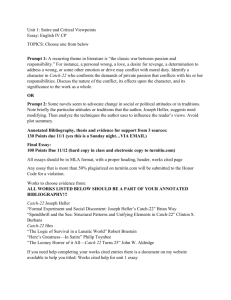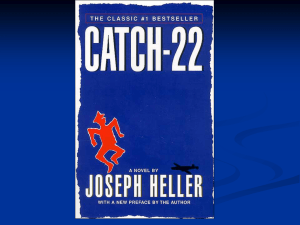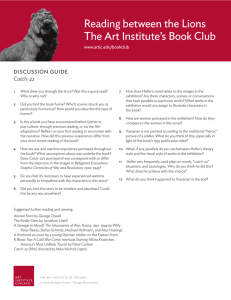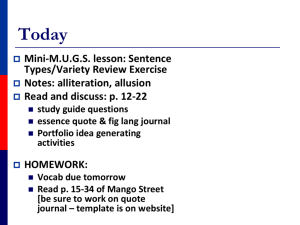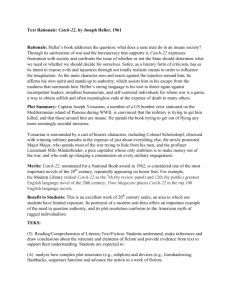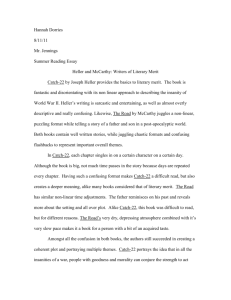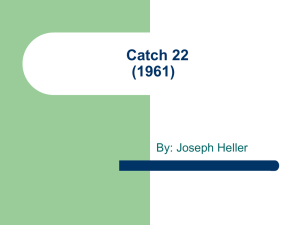Annotated Bibliography
advertisement
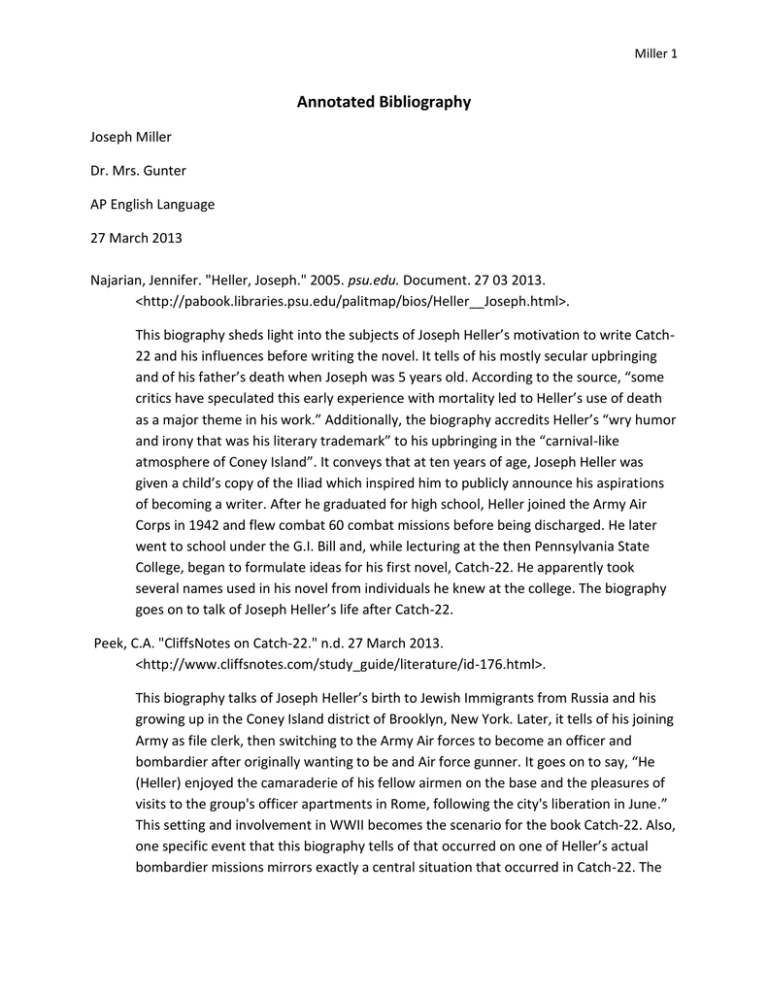
Miller 1 Annotated Bibliography Joseph Miller Dr. Mrs. Gunter AP English Language 27 March 2013 Najarian, Jennifer. "Heller, Joseph." 2005. psu.edu. Document. 27 03 2013. <http://pabook.libraries.psu.edu/palitmap/bios/Heller__Joseph.html>. This biography sheds light into the subjects of Joseph Heller’s motivation to write Catch22 and his influences before writing the novel. It tells of his mostly secular upbringing and of his father’s death when Joseph was 5 years old. According to the source, “some critics have speculated this early experience with mortality led to Heller’s use of death as a major theme in his work.” Additionally, the biography accredits Heller’s “wry humor and irony that was his literary trademark” to his upbringing in the “carnival-like atmosphere of Coney Island”. It conveys that at ten years of age, Joseph Heller was given a child’s copy of the Iliad which inspired him to publicly announce his aspirations of becoming a writer. After he graduated for high school, Heller joined the Army Air Corps in 1942 and flew combat 60 combat missions before being discharged. He later went to school under the G.I. Bill and, while lecturing at the then Pennsylvania State College, began to formulate ideas for his first novel, Catch-22. He apparently took several names used in his novel from individuals he knew at the college. The biography goes on to talk of Joseph Heller’s life after Catch-22. Peek, C.A. "CliffsNotes on Catch-22." n.d. 27 March 2013. <http://www.cliffsnotes.com/study_guide/literature/id-176.html>. This biography talks of Joseph Heller’s birth to Jewish Immigrants from Russia and his growing up in the Coney Island district of Brooklyn, New York. Later, it tells of his joining Army as file clerk, then switching to the Army Air forces to become an officer and bombardier after originally wanting to be and Air force gunner. It goes on to say, “He (Heller) enjoyed the camaraderie of his fellow airmen on the base and the pleasures of visits to the group's officer apartments in Rome, following the city's liberation in June.” This setting and involvement in WWII becomes the scenario for the book Catch-22. Also, one specific event that this biography tells of that occurred on one of Heller’s actual bombardier missions mirrors exactly a central situation that occurred in Catch-22. The Miller 2 biography goes on to tell of Heller’s life in colleges after his military careers and of his other major works. Foerstel, Herbert N. Banned in the U.S.A. Greenwood Publishing Group, 1994. This book addressed Catch-22 being banned specifically in Strongsville, Ohio in 1972 after school teachers recommended the use of Catch-22 in the school’s curriculum. The Strongsville Board of Education not only rejected their recommendation but also ordered the book removed from the library. Apparently there were no official reasons given for removal, but it is recorded that the books were called “completely sick” and “garbage” at a Board Meeting. The book goes on to say that five high school parents were able to uplift the ban by claiming violation of the First and Fourteenth Amendments rights. Doyle, Robert P. Banned Books Resource Guide. 2004. The source conveys that there were multiple occasions were the book was challenged and/or banned. There were three specific instances where Catch-22 was challenged: Strongsville, Ohio (1972), Dallas, Texas Independent School (1974), and Snoqualmie, Washington (1979). In Strongsville, it was banned, but the decision was overturned in 1976. In Snoqualmie, it was challenged specifically for its “several references to women as whores.” Aldridge, John W. "THE LOONY HORROR OF IT ALL- 'CATCH-22' TURNS 25 ." 26 October 1986. nytimes.com. Document. 27 March 2013. This reviews talks of Catch-22 as receiving mixed reviews. Some people opposed the writing style of the book, claiming that Heller was like “a brilliant painter who decides to throw all the ideas in his sketchbooks onto one canvas, relying on their charm and shock to compensate for the lack of design.'' While others felt that it was “not merely the best American novel to come out of World War II; it is the best American novel to come out of anywhere in years.” The article also spoke of the new type of fiction Catch-22 brought about through its harsh realities and dark humor. The article goes on to talk about its poor reception from newspaper at first after its release, but then that it was praised by other newspapers and became more popular as a satirical anti-war novel.
